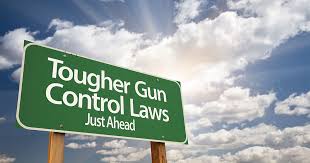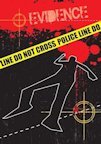Last September I reviewed Caroline Light’s book, Stand Your Ground, and said it was a must-read. The book is now about to be published, so I thought I would go back and discuss what I didn’t cover in my previous review. Last time I discussed the major theme of the book, which is how and why America departed from the British, common-law tradition of retreating in the face of a direct threat and replaced it with laws which basically sanction the use of homicidal force in just about any kind of direct confrontation that might occur. And what’s the most efficient way to respond to a real or imagined threat? We all know the answer to that.
 This time, however, I want to look at the issue which is somewhat tangential to Professor Light’s primary concern, but nevertheless must be addressed. At the same time that states began passing SYG laws, they also began easing restrictions on the ability of citizens to walk around with guns, two legal developments that are promoted vigorously by Gun-nut Nation, and which may set the legislative gun agenda on Capitol Hill in the Age of Trump.
This time, however, I want to look at the issue which is somewhat tangential to Professor Light’s primary concern, but nevertheless must be addressed. At the same time that states began passing SYG laws, they also began easing restrictions on the ability of citizens to walk around with guns, two legal developments that are promoted vigorously by Gun-nut Nation, and which may set the legislative gun agenda on Capitol Hill in the Age of Trump.
For SYG and CCW the argument in favor goes like this: gun-owners are extremely law-abiding, people with concealed-carry permits even more so, bad guys will always try to avoid a criminal situation where their victim might be armed, hence, the armed citizen protects society from crime. The NRA has been peddling this formula for more than twenty years, they trot it out every time an act of gun violence occurs in places where citizens should be able to carry guns (schools, airports, etc.) and Trump vigorously promoted this nonsense at every opportunity during the campaign.
But what if it’s not nonsense? What if the end result of people walking around with guns is no real increase in gun-violence? In that case, what difference would it make if a bunch of children masquerading as adults want to pretend they can behave like citizen-protectors and use their guns to shoot the bad guys and reduce our risk of harm? The problem is that the evidence on the value of people carrying guns and playing cops and robbers is ambiguous, if not wholly incorrect, but the counter-argument, that the presence of armed citizens increases the risk of gun violence is also not a proven fact.
On the pro-gun side we have, as always, the works of Gary Kleck and John Lott. On the basis of 221 completed telephone interviews, Kleck decided that armed citizens were responsible for preventing upwards of 2 million crimes each year. Kleck’s fantasy has been more or less consigned to the dustbin and replaced by John Lott’s statistical mish-mash which nobody else can validate or reproduce. He says that when the number of concealed-carry licenses goes up, violent crime goes down. Lott could teach Donald Trump a few things about how to get caught in a lie and keep insisting it’s the truth.
For GVP, the evidence pointing to increased gun violence in SYG states is not entirely conclusive but it’s strong. On the other hand, the argument that letting people walk around ‘strapped’ generates more gun violence is less clear. The numbers of gun deaths committed by CCW-holders averages roughly 100 per year – that’s not even 1 percent of all gun homicides and in many states the toll is less than 1 per year.
I like Caroline Light’s book – concise, readable and the analysis of court decisions is very well done. It’s too bad it will only be taken seriously by advocates on one side. The other side is too busy awaiting the day that every single last, bothersome gun law will finally be put to bed. But a funny thing seems to be happening in DC because more people may show up to rally against Trump than to celebrate his great day. And most of the folks who give Trump low marks so far happen to be people who aren’t enamored of guns. So we’ll see what we see.


Recent Comments